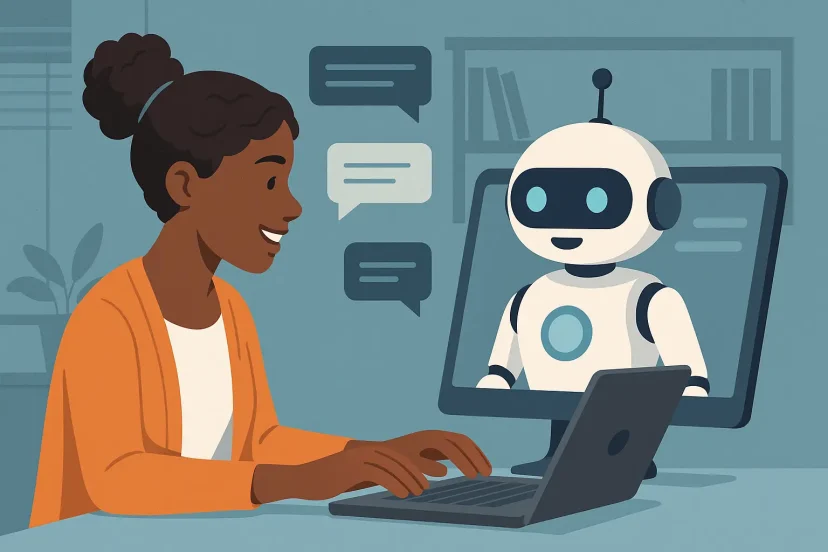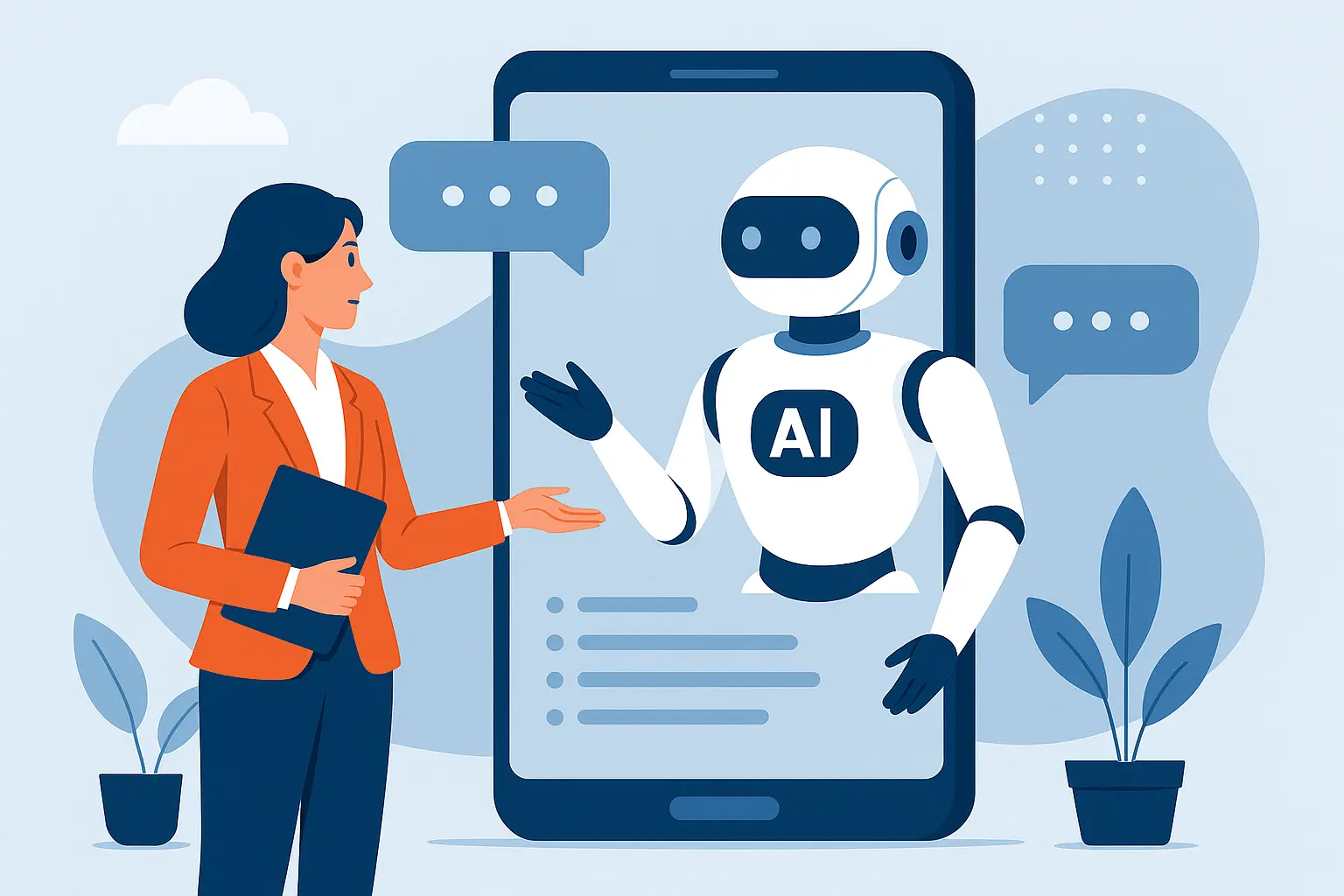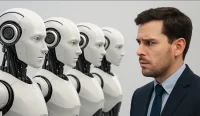Introduction
Recruitment Chatbots in 2025 are reshaping the way companies approach hiring. With the rise of AI-driven systems, employers can now screen, schedule, and engage candidates in ways that were unthinkable just a few years ago. From fast-food chains like Chipotle to global enterprises like General Motors and Hewlett Packard Enterprise, recruitment chatbots are no longer an experiment — they’re becoming the standard.
As recruitment chatbots in 2025 continue to advance, the debate now shifts from whether companies should use them to how they can strike the right balance between automation and human interaction in the hiring process.
But what do recruitment chatbots actually do? And more importantly, what do they mean for employers, recruiters, and job seekers using platforms like WhatJobs? Let’s dive into the future of hiring.
What Are Recruitment Chatbots?
A recruitment chatbot is an automated software tool that interacts with job candidates via text, chat, or voice. Unlike traditional application forms, chatbots create conversational experiences where candidates answer questions, schedule interviews, or get updates in real time.
There are two main types:
- Rule-based chatbots: Follow pre-programmed scripts and workflows.
- AI-powered chatbots: Use natural language processing (NLP) and machine learning to answer more complex questions.
Most chatbots integrate seamlessly with Applicant Tracking Systems (ATS), job boards, and company career pages, acting as a first line of interaction before a recruiter steps in.

Key Benefits of Recruitment Chatbots
1. Faster Hiring Cycles
Chatbots can instantly screen applications and schedule interviews. For high-volume hiring (e.g., retail, food service, call centers), this can cut time-to-hire by up to 70%.
2. 24/7 Candidate Engagement
Unlike human recruiters, chatbots never sleep. Candidates can ask questions and apply anytime — midnight or morning.
3. Lower Hiring Costs
By automating repetitive tasks, companies save recruiter hours and reduce overall cost-per-hire.
4. Improved Candidate Experience
Applicants don’t get stuck waiting for replies. Friendly, conversational interfaces make them more likely to complete applications (Chipotle boosted completion rates to 85% with its “Ava Cado” chatbot).
5. Scalable Hiring
For seasonal peaks (like holiday retail or large-scale manufacturing), chatbots handle thousands of applications without overwhelming HR teams.
Hire Smarter with WhatJobs
Post your job on WhatJobs and connect with candidates faster—combine human expertise with AI efficiency in recruitment.
Post a Job Now →Challenges and Limitations
Despite the hype, recruitment chatbots aren’t perfect.
- Loss of Human Touch: Candidates sometimes feel they’re “talking to a robot,” which can hurt employer branding.
- Bias & Accuracy Concerns: Poorly trained AI may reinforce hiring biases.
- Technical Failures: Glitches in scheduling or misunderstood answers can frustrate applicants.
- Employer Branding Risks: A bad chatbot experience spreads quickly online.
👉 Lesson: Chatbots should support recruiters, not replace them.
Types of Recruitment Chatbots
- Screening Bots – Ask candidates qualifying questions (e.g., availability, work authorization).
- Scheduling Bots – Automatically book interviews with hiring managers.
- Engagement Bots – Keep candidates updated on application status.
- Conversational AI Bots – Use NLP to answer FAQs, explain benefits, or guide candidates through applications.
Case Studies — Who’s Using Chatbots Effectively?
Chipotle: Boosting Application Completion
- Introduced “Ava Cado” to simplify job applications.
- Result: 85% completion rate and faster hiring, but faced scheduling glitches.
Hewlett Packard Enterprise (HPE): Faster Interviews
- Used AI bots to schedule interviews across multiple time zones.
- Result: 70% reduction in scheduling time.
General Motors (GM): High-Volume Recruiting
- Leveraged chatbots for screening thousands of candidates.
- Result: Faster identification of qualified applicants for manufacturing roles.
Best Practices for Employers
If you’re thinking about integrating chatbots into your recruitment strategy, follow these guidelines:
- Start Small: Begin with FAQs and scheduling before expanding into full conversational AI.
- Always Allow Human Escalation: Complex cases should route to a recruiter.
- Train on Inclusive Data: Avoid bias by testing with diverse candidate pools.
- Measure Success: Track KPIs like time-to-hire, cost-per-hire, and candidate satisfaction.
The Future of Recruitment Chatbots
Looking ahead, recruitment chatbots will continue to evolve with new capabilities:
- AI Video Interviews: Chatbots scheduling and even running initial screening interviews.
- Personalized Journeys: Bots adapting based on candidate profiles and behavior.
- Employer Branding Tools: Bots reinforcing company values, culture, and DEI commitments.
- Multilingual Support: Reaching global candidates in their native languages.
For employers, this means chatbots won’t just be tools — they’ll become strategic recruitment partners.
Conclusion
Recruitment chatbots are no longer “nice-to-have” tools — they’re reshaping how companies hire in 2025. When implemented correctly, they save time, cut costs, and improve candidate experience.
But the real winners will be employers who blend AI efficiency with human empathy. Recruiters remain essential for building relationships, while chatbots handle the repetitive, time-consuming tasks.
If you’re ready to take recruitment into the future, start exploring chatbot integrations today — and amplify your hiring reach by posting on WhatJobs.




